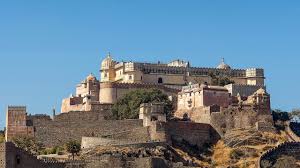Table of Contents
ToggleIntroduction
Ever thought about going on a trek that makes your jaw drop—literally? That’s exactly what Har Ki Dun does to you. It’s not your usual weekend hike. This place feels untouched, almost sacred. But here’s the thing—going in unprepared or without the right guidance can turn this dream into a disaster real fast.
When I first considered trekking to Har Ki Dun, I thought, “Hey, I’ve done treks before, I’ve got this.” I couldn’t have been more wrong. What changed the game for me was having a guide who knew the trail like the back of their hand. Without that, I would’ve missed half the magic and maybe even risked my safety.
Let’s get into why a knowledgeable guide isn’t just helpful—it’s essential for this particular journey.
Overview of Har Ki Dun Trek

Har Ki Dun, tucked away in the Garhwal Himalayas of Uttarakhand, sits at an altitude of around 12,000 feet. Depending on your pace and itinerary, the walk takes roughly 7 to 8 days. It’s not exactly an Everest Base Camp situation, but don’t let the moderate label fool you—it’s still wild, remote, and challenging.
You encounter old villages, cross wooden bridges, go through thick forests, and eventually arrive in a cradle-shaped valley encircled by snow-capped peaks. Sounds like a postcard, right? Well, it is. But those scenic views also hide tricky terrain, unpredictable weather, and the kind of remoteness that doesn’t forgive poor planning.
This isn’t a walk in the park where you can just follow signs or ask for help around every corner. That’s where a guide steps in—not just to show you the way, but to make the journey safer, smoother, and way more enriching.
The Allure of the Unknown
Part of what makes Har Ki Dun so magical is how untouched and isolated it feels. You walk through trails that feel ancient. You see peaks that look like they were never meant to be seen by too many eyes. But guess what? That same sense of remoteness is exactly what can throw you off.
Without a guide, you’re venturing into unknown territory with very little margin for error. Trails aren’t always marked. You won’t find mobile networks. And Google Maps? There, it might as well not exist.
A guide doesn’t just lead the way—they read the landscape. They can tell from the clouds whether it’s about to snow, or from a change in the trail’s texture if a landslide happened recently. This isn’t something you learn from blogs or YouTube.
Trust me, it’s easy to get turned around in the vast silence of the valley. And once you’re off-track, help isn’t a phone call away. A knowledgeable guide is like having Google, Wikipedia, and a guardian angel rolled into one, walking right beside you.
Safety Comes First
Here’s the unfiltered truth—trekking can get dangerous. One moment you’re enjoying the view, the next you’re shivering because the temperature just dropped 10 degrees. That’s the Himalayas for you—beautiful but brutal.
Altitude sickness, twisted ankles, blizzards—these things don’t care if it’s your first trek or your fifth. And when something goes wrong up there, you’re really on your own unless someone knows exactly what to do.
Situational Awareness
A guide isn’t just reacting to what’s happening. They’re anticipating it. From subtle signs of AMS (Acute Mountain Sickness) to reading animal tracks or choosing safer river crossings, a trained guide is constantly scanning for danger—and acting before it hits.
Emergency Response Know-How
I have personally seen how easily things can go awry. On my trek, one person in our group had a bad fall. Within seconds, our guide had him stabilized, wrapped, and set up for evacuation. No panic. No confusion. That kind of presence? You can’t DIY that.
Navigating the Terrain
Even if you’ve got a great sense of direction, Har Ki Dun can throw you off. One wrong fork and you could walk for hours in the wrong direction. Sure, tech helps—until it doesn’t. Battery dies. GPS glitches. Maps don’t match the ground reality.
A guide doesn’t rely on apps. They rely on instinct, memory, and years of experience. They know the shortcuts. They know which trails are washed out after rains. They know how to read a trail based on boot marks, broken twigs, or even the smell of distant campfires.
You get more than just directions. You get a path that’s safer, more efficient, and maybe even more scenic than the one you would’ve taken on your own.
Local Knowledge = Richer Experience
Anyone can walk from point A to point B, let’s face it. But Har Ki Dun isn’t just about getting to the summit. Everything you see, experience, and learn along the journey is important. And without someone who knows the land, you’ll miss so much.
A knowledgeable guide isn’t just there to keep you safe. They serve as the area’s living encyclopaedia. Mine pointed out rare Himalayan birds I would’ve missed, explained the medicinal properties of wild plants we passed, and shared folklore about the Swargarohini peak that genuinely gave me goosebumps.
These guides often belong to the very villages you walk through—like Osla or Gangad. They’re not reciting facts from a textbook; they’re sharing stories passed down through generations. That kind of authenticity? You won’t find it in any travel vlog or trail app.
So if you’re someone who wants to experience Har Ki Dun rather than just see it, a guide isn’t optional—it’s essential.
Permits and Regulations
Here’s a little-known fact: Har Ki Dun is part of the Govind Pashu Vihar National Park. That means you need permits—often multiple—to legally trek in the area. Try handling that on your own, especially if you’re coming from out of state or abroad, and you’re in for a paperwork mess.
A knowledgeable guide knows exactly what’s needed and where to get it. They often handle all the logistics before you even reach the base village of Sankri. And if any rules change (which they often do), they’re the first to know.
It saves time, avoids fines, and lets you focus on the trek—not red tape. When I booked through a team I trusted, all of that was taken care of. I didn’t even realize how much work went into it until I saw another group stuck at a checkpoint because their documents weren’t in order.
That’s not how you want to start your Himalayan adventure.
Time and Energy Management
Efficiency is more important than endurance when trekking in the Himalayas. Burn out on Day 2, and the rest of your trek is going to feel like punishment. That’s where a guide’s planning really shines.
They are aware of when to wait and when to exert pressure. They’ve timed these trails hundreds of times, so they know the best spots for rest, water breaks, and even the right time to tackle steep ascents. Without that rhythm, it’s easy to misjudge and end up drained way before your destination.
I remember one morning on the trail—my legs were shot, and I thought we were miles from camp. Our guide smiled and said, “Just around that bend.” He was right. That pacing helped all of us conserve energy and enjoy the journey, not just survive it.
Food, Shelter, and Logistics
If you’re thinking of trekking Har Ki Dun solo, here’s something to consider: where are you sleeping and what are you eating? This isn’t a trek with hotels or food stalls every few kilometers. Resources are scarce, and planning is everything.
Guides usually have arrangements with local homestays or carry tents and food supplies. They know which huts are safe, which streams have clean water, and how to adjust if plans suddenly change due to weather or trail conditions.
On one night, our campsite had to change because a bridge washed out ahead. No panic. Our guide rerouted us, arranged a safe spot to camp, and had hot food ready before sunset. Without him, that night could’ve turned into a cold, hungry mess.
You’re not merely hiring someone to accompany you on your walk. You’re hiring peace of mind.
Making the Most of the Trek
Let’s talk about what separates a trip from an experience. That difference? It’s often your guide. Sure, you’ll still see the views without one—but will you know which peak is Swargarohini and what it means in mythology? Will you catch that secret side trail that leads to a mind-blowing sunrise spot?
A good guide enhances every single day on the trail. They’ll tell you when to wake up early to catch that golden hour glow on the valley. They’ll suggest detours that most tourists skip. They’ll help you interact with locals in a way that feels natural and respectful, not awkward or invasive.
And if photography’s your thing, they know exactly when and where to stop. Trust me, I got some of my best shots thanks to my guide’s local insight—photos I’d never have framed if I was blindly following a downloaded trail map.
Shared Stories, Not Just Directions
One of the most unexpected joys of having a knowledgeable guide like (The Searching Souls) on the Har Ki Dun trek? The stories. I’m not just talking about myths or history—though those are amazing, too—I mean the real, personal, lived experiences that only come out around a campfire or during a long climb.
You’ll hear about close calls in snowstorms, about strange animal encounters, or about past trekkers who left a mark on the guide’s memory. I still remember my guide telling me about a time he helped an elderly trekker fulfill a lifelong dream of seeing Swargarohini. It was touching and humbling—and made me appreciate the moment even more.
This is what makes the trek personal, not transactional. You feel part of something bigger. You’re not just walking through a beautiful place—you’re sharing it with someone who’s grown up in its shadow, who respects it deeply, and who helps you respect it, too.
Without a guide, the trek is beautiful. With one, it becomes unforgettable.
Real-Life Examples
Let me paint a picture for you. On one of my trips, I crossed paths with a group trying to do Har Ki Dun on their own. They were exhausted, low on supplies, and completely unsure if they were even on the right trail. One of them had a nasty blister turning into a possible infection. Hours had passed since they last saw someone.
We, on the other hand, had just finished lunch, had extra medical supplies, and were heading toward a less crowded route that our guide recommended for better views and a more peaceful night. It wasn’t just luck—it was local insight.
There are so many stories like this. People missing out on key experiences or putting themselves in unnecessary danger simply because they underestimated the trail. And on the flip side, there are stories where a guide made all the difference—whether it was adjusting the itinerary to avoid bad weather or helping a sick trekker descend safely.
You never realize how crucial that knowledge is—until you do.
Not All Guides Are Equal
Now, let’s be clear: just because someone calls themselves a guide doesn’t mean they’re the right one for you. I’ve seen both ends of the spectrum. Some guides are glorified porters with no real insight, while others are local legends with decades of experience and a sixth sense for the mountains.
So what should you look for?
-
Experience in the specific region (not just generic trekking)
-
Wilderness first aid certification
-
Strong communication skills
-
Local roots (they live the trail, not just walk it)
-
Good reviews from previous trekkers
A good guide does more than just get you where you’re going. They teach you, protect you, and make sure you go home with more than just photos.
My Personal Recommendation (Casual Mention)
When I planned my Har Ki Dun trek, I didn’t want to gamble. After some digging and a few chats with fellow trekkers, I ended up joining a small group through a team that operates from Sankri and nearby villages. They weren’t flashy, they weren’t pushy—they just knew the mountains inside out.
I won’t name-drop, but they’re the kind of folks who let their work speak. From arranging permits to prepping meals with local ingredients, everything felt thoughtful. Our guide, Ramesh, had done the trek over 50 times. You could tell—it was in the way he picked trails, timed breaks, and shared stories that made you feel like you belonged there.
If you’re planning this trek, I highly suggest reaching out to a team name ( The Searching Souls). You’ll support the community and get a far richer experience.
Conclusion
Har Ki Dun is more than a trek. It’s a journey into raw beauty, rich culture, and the kind of solitude you rarely find anymore. But make no mistake—it’s wild, remote, and not without its risks.
A knowledgeable guide transforms this experience from a physical challenge into a soulful adventure. They ensure your safety, open doors to hidden experiences, and share a connection to the land that no map or app ever could.
You could go without a guide. Sure. But if you want the real Har Ki Dun—the stories, the insights, the peace of mind—you’ll want someone by your side who knows those trails like they were born on them.
FAQs
1. Should I still train physically if I have a guide?
Absolutely. A guide helps, but they can’t walk for you. Har Ki Dun involves long hiking days, so basic fitness is non-negotiable.
2. Can’t I just go with a GPS and downloaded map?
You can, but it’s risky. Trails change, signs fade, and GPS doesn’t always work. A guide offers real-time judgment no tech can match.
3. Are group tours with guides better than solo + guide?
Depends on your vibe. Group tours can be more social and cost-effective. Solo + guide gives you flexibility and a personalized pace.
4. How do I verify a guide’s credentials?
Ask for certifications, check reviews, and see if they’re affiliated with local trekker unions or forest department approvals.
5. Is it worth the cost?
For what you gain—safety, local insight, convenience—it’s 100% worth it. Think of it as an investment in your experience.




